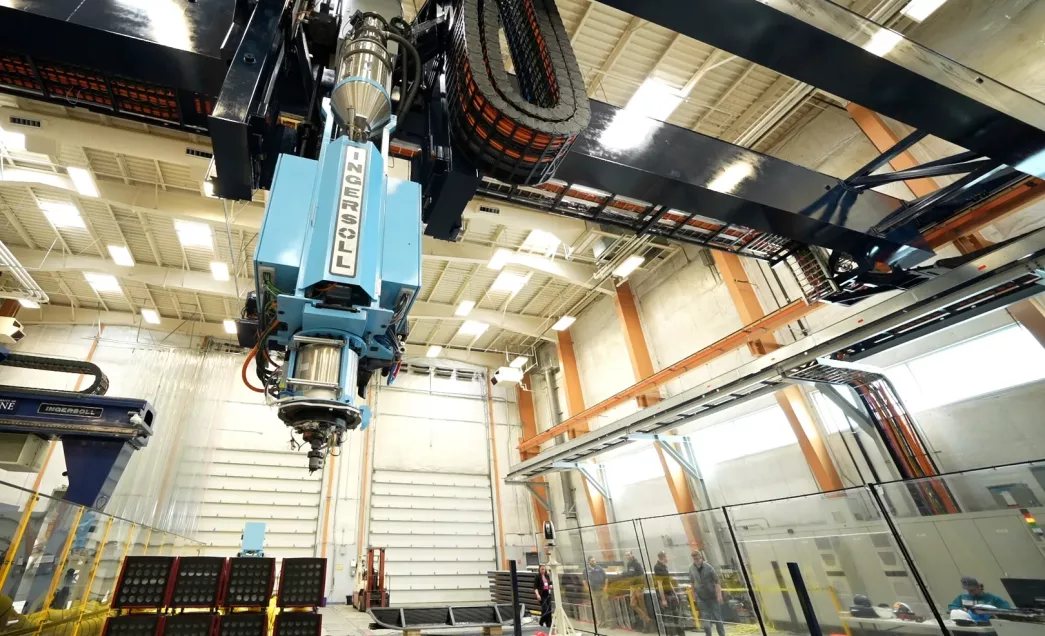The University of Maine has introduced an unprecedented advancement in construction technology with the unveiling of the world’s largest 3D printer. This groundbreaking innovation promises to revolutionize traditional construction methods, offering a glimpse into a future where entire neighborhoods could be created through additive manufacturing.
This remarkable achievement marks a significant leap forward from the university’s initial foray into 3D printing, which began less than five years ago with a smaller-scale printer. Now, the new printer, aptly named the “Factory of the Future 2.0,” dwarfs its predecessor, boasting capabilities to produce even more colossal objects. Under the stewardship of Habib Dagher, director of UMaine’s Advanced Structures & Composite Center, this cutting-edge technology integrates robotics, advanced sensors, high-performance computing, and artificial intelligence to push the boundaries of what’s possible in construction.
The unveiling event attracted a diverse array of stakeholders, including representatives from defense, energy, housing, and beyond. Heidi Shyu, undersecretary of defense for research and engineering, lauded the printer as a beacon of innovation, exceeding expectations and inspiring collaboration across sectors.
Concealed behind a black curtain during the event, the printer hummed to life, offering a tantalizing glimpse of its capabilities. With dimensions surpassing 96 feet in length, 32 feet in width, and 18 feet in height, this behemoth of a machine occupies a substantial space within the UMaine campus. Its voracious appetite for materials, devouring up to 500 pounds per hour, underscores its potential to tackle ambitious projects with ease.
The original printer, certified by Guinness World Records as the largest polymer 3D printer, made waves with its creation of the pioneering “BioHome3D.” Constructed from wood fiber and bio-resin materials, this sustainable dwelling showcased the printer’s ability to rapidly produce homes. With Maine facing a pressing need for housing, the university aims to address both affordability and sustainability challenges by demonstrating the viability of 3D-printed homes with a reduced carbon footprint.
According to Dagher, the goal is not merely to construct buildings but to create homes that inspire awe and admiration. By leveraging bio-based materials and embracing recyclability, these printed structures offer a pathway to sustainable living while mitigating the environmental impact of traditional construction methods.
Funded primarily by the Army Corps of Engineers, the new printer represents a significant investment in research and innovation. Moving forward, researchers plan to explore the potential of bio-based feedstocks sourced from Maine’s abundant wood residuals, further enhancing the sustainability of 3D-printed construction.
Looking ahead, the university envisions a future where multiple printers work in tandem, seamlessly collaborating on ambitious projects ranging from boats to homes for the homeless. With the unveiling of the world’s largest 3D printer, the University of Maine embarks on a journey to redefine the possibilities of construction and shape the cities of tomorrow.

















